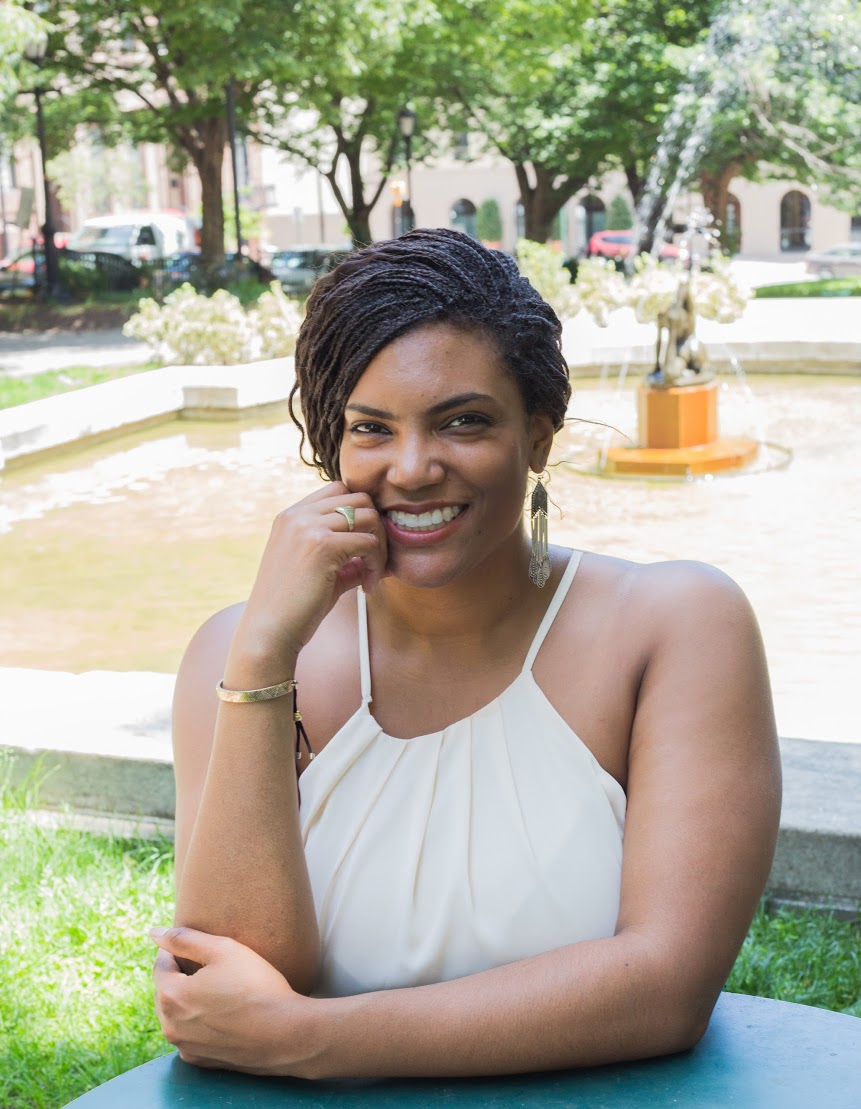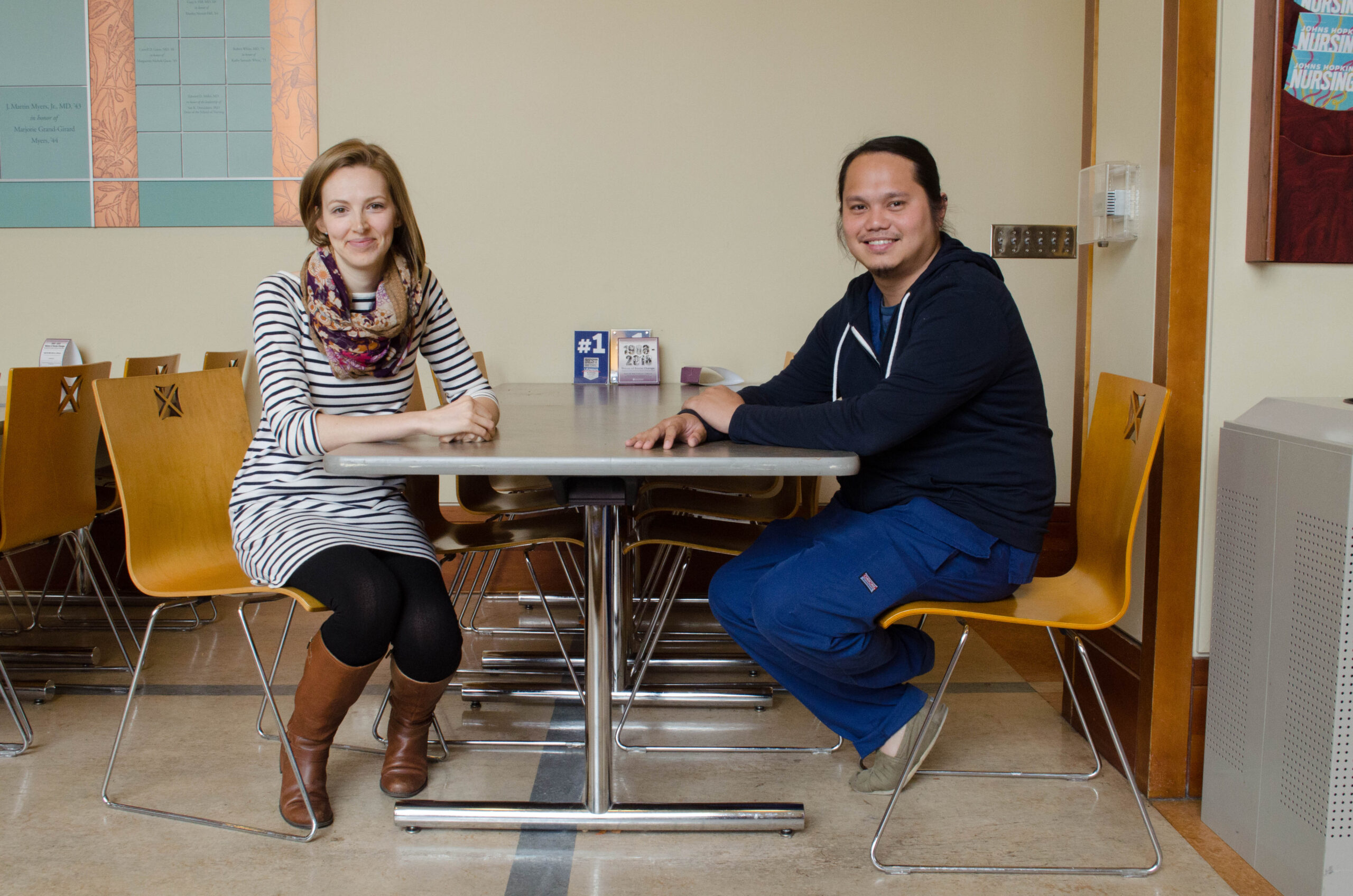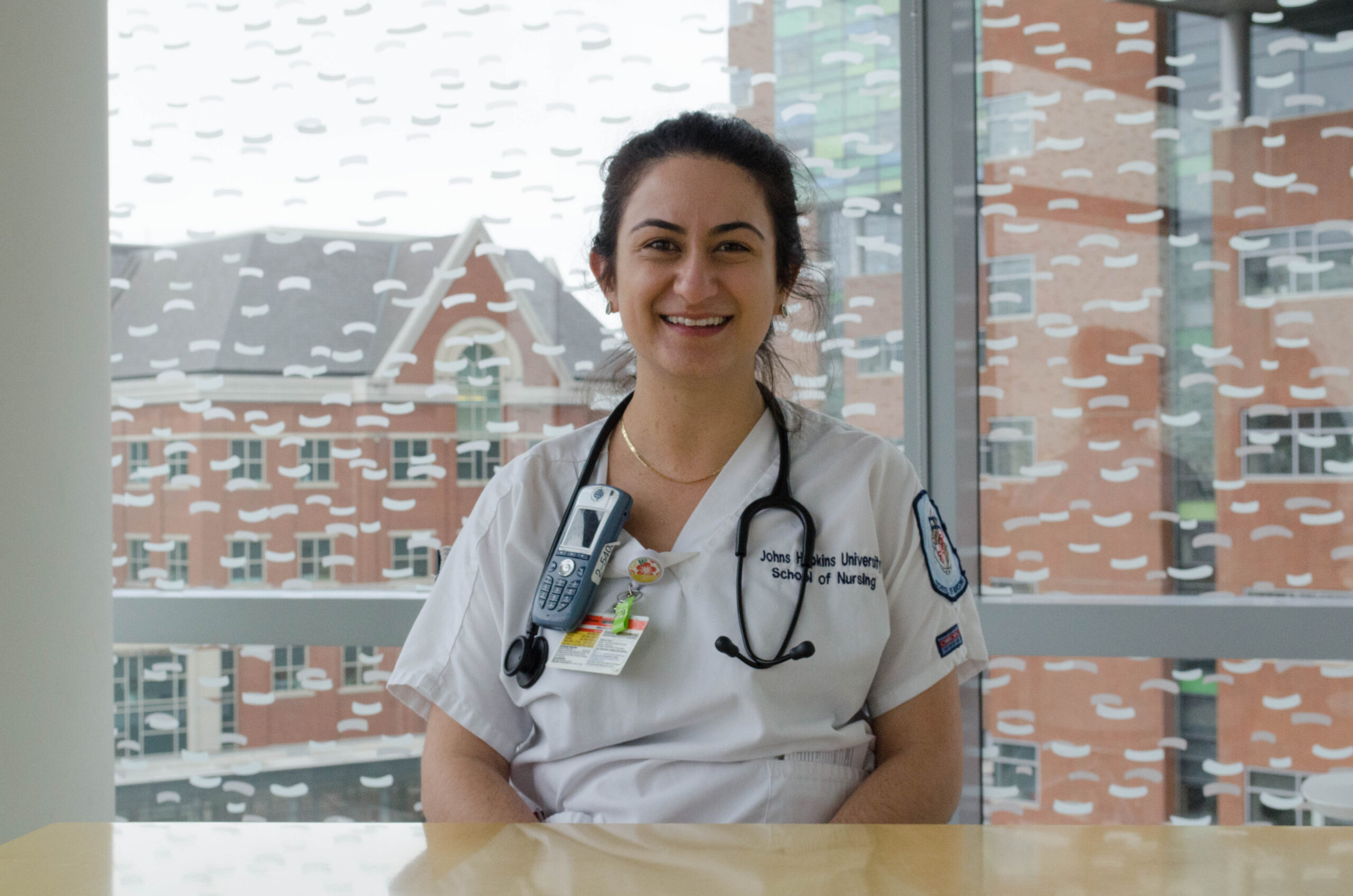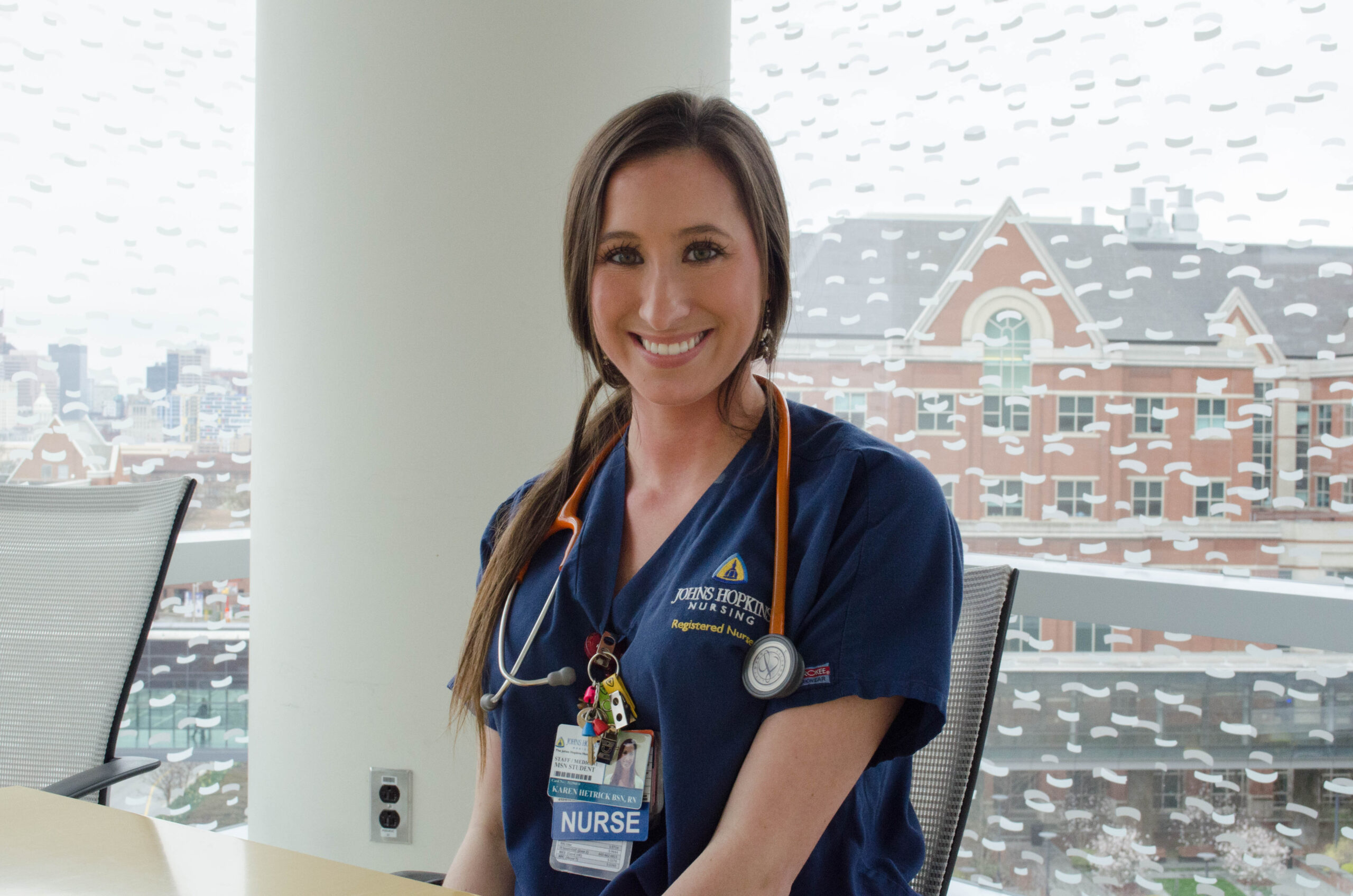At its best the preceptor-student experience is mutually beneficial—on the nurse’s side, a fresh perspective and a helper who you trust; students get to leave the classroom and care for real patients. And at the end a preceptor who held your hand as you practiced the steps to save a patient’s life knows they helped you grow into a confident, quick-thinking, quick-caring nurse who is prepared for the fast-paced critical care environment.
“My preceptor on the Weinberg ICU, Lyndon Caparas, is a very supportive mentor who goes out of his way to ensure I have a good clinical experience.
He frequently asks for a shift assignment that will let me see or practice a new skill (such as a shift focusing on prioritization, or a 1:1 sick patient, or new admission) and asks me what types of patients I would like to care for during upcoming assignments. He takes the time to answer my questions, quiz me, and discuss rationale and necessary follow up for medications and labs. During down time we discuss why patients present the way they do, protocols, or EKG readings. At the end of each shift, Lyndon allows me to give hand off report to the oncoming nurse.
Even during stressful situations, Lyndon stays calm and encouraging.”
Preceptor: Lyndon Caparas, Weinberg Intensive Care Unit, Johns Hopkins Hospital
Student: Rebecca Dove, MSN (Entry Into Nursing) 2018
“Jenna’s different because she takes initiative. Once we go over the flow of the day, she just picks it up and goes with it,” says Karen Hetrick (Jenna’s preceptor). Some of her students have been more tentative.
It’s why they mesh well. “I appreciate the ability to be autonomous in what I’m doing,” says Jenna, “but Karen’s also a great mentor, so any question I have she’s happy to answer at the drop of a hat.”
Another important thing is trust, according to Karen. “I trust that Jenna has good intuition. We had a patient a few weeks ago, an elderly man around 80 with a lot of comorbidities (really bad heart failure, renal disease, peripheral vascular disease, and a history of ectopy) who had maxxed out his treatment options.
He was a standby assist during the day shift, but when we came on he said ‘I can’t get out of this chair, I can’t move.’ When we stepped out Jenna said ‘I think that’s very concerning, he had a complete decline in mobility’ and in about 24 hours he actually passed away. It was a subtle change, we were preparing to release him, but Jenna spotted his decline first and she was absolutely correct.”
Preceptor: Karen Hetrick, Progressive Cardiac Care Unit, Johns Hopkins Hospital
Student: Jenna Lemberg, MSN (Entry Into Nursing) 2018
Nurse preceptors are in demand. The U.S. Bureau of Labor Statistics expects the nursing profession to grow from 2.75 million RN positions in 2014 to 3.19 million RN positions in 2024.

ABOUT THE AUTHOR: SYDNEE LOGAN
Sydnee Logan is the Social Media and Digital Content Coordinator for Johns Hopkins School of Nursing. She shares what’s going on here with the world.




